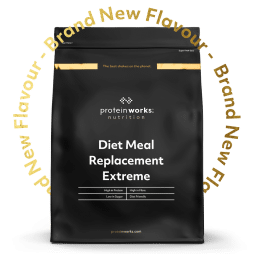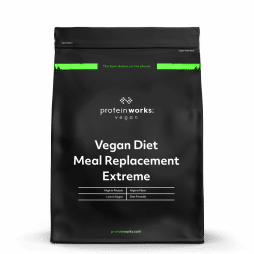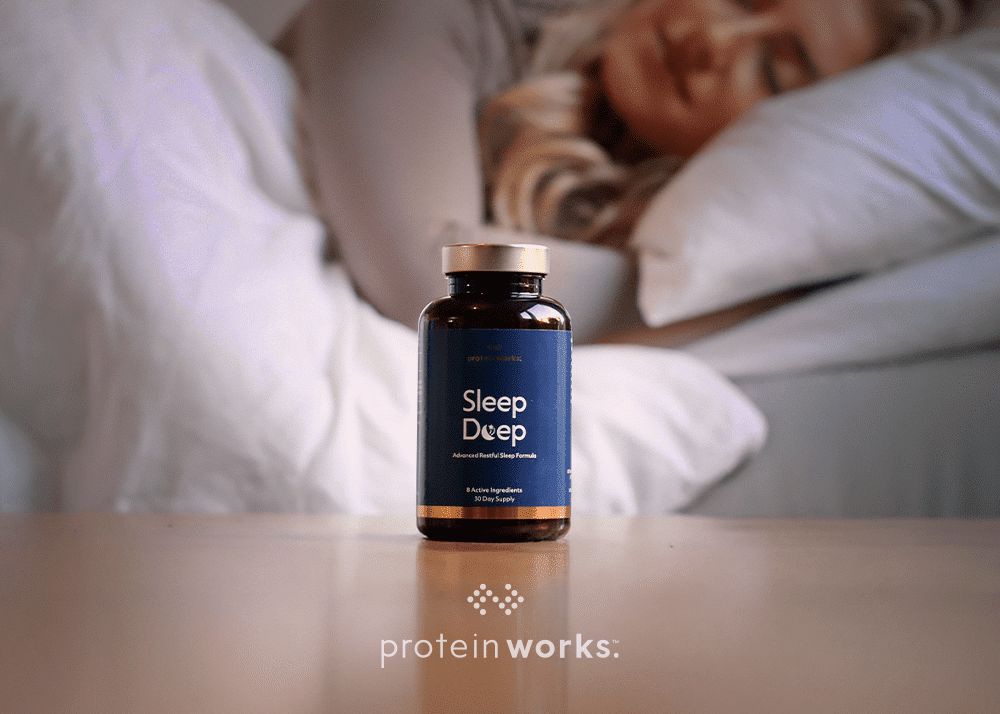
How Meal Replacements Keep You Feeling Full
If you’re trying to lose weight, one of the biggest challenges you’ll face is feeling hungry. Reducing calories and eating less as part of a weight loss effort can leave you feeling peckish. It’s why many people turn to snacks and treats, which can hamper attempts to lose weight. Battling hunger is one of the reasons some weight loss drugs have become more popular. They make you feel full and stifle hunger, leading to eating less. You may be surprised to know that meal replacement shakes can achieve similar results in helping you feel full. The good news is that you can enjoy the same benefits through nutritional science alone, rather than needing pharmaceutical intervention. But how do meal replacement shakes work?
Instead of relying on synthetic compounds that manipulate your hormones, quality meal replacements use carefully balanced combinations of protein, fibre, healthy fats and micronutrients to naturally trigger your body’s satiety signals and help you feel fuller for longer.
If you’re considering meal replacements but worried about feeling hungry while trying to reach your health goals, understanding the science behind satiety can give you the confidence that a well-formulated shake really can keep you satisfied. Let’s take a look at how it all works.
 What is satiety?
What is satiety?
Satiety (pronounced “suh-TIE-uh-tee”) is your body’s natural signal that you’ve had enough food. It’s that comfortable feeling of being satisfied after eating, when you’re no longer thinking about food and you feel energised rather than sluggish. This biological mechanism evolved to help us maintain a healthy balance between energy intake and expenditure.
When your satiety signals work properly, they act like a built-in portion control system. You naturally stop eating when your body has received adequate nutrition, making it easier to maintain a healthy weight without constantly battling hunger or cravings.
Modern processed foods can disrupt these signals, which is why it’s easy to overeat and not lose weight. Foods high in refined sugars and unhealthy fats often leave you feeling unsatisfied despite consuming plenty of calories. This leads to overeating and that familiar cycle of feeling hungry again shortly after a meal.
Signals of satiety
Your brain doesn’t instantly know when you’ve eaten enough. The communication network between your digestive system and your brain takes some time to relay the full message:
- When food enters your stomach, it begins to stretch. This stretching sends signals through your vagus nerve to your brain, essentially saying “we’re receiving food down here”.
- Simultaneously, your digestive system releases hormones like cholecystokinin (CCK) and glucagon-like peptide-1 (GLP-1), which slow gastric emptying and signal satiety to your brain.
- Your fat cells also join the conversation by releasing leptin, sometimes called the “fullness hormone,” which tells your brain about your body’s energy stores.
- Meanwhile, ghrelin (the “hunger hormone” produced in your stomach) starts to decrease as you eat.
This entire process takes about 20-30 minutes, which explains why you can go from feeling hungry to uncomfortably full, seemingly in an instant. The key to avoiding this is taking your time with your meals and eating slowly enough to allow these natural satiety signals to kick in before you’ve overdone it.
What do replacement shakes do to keep you full?
Well-designed meal replacement shakes fill you up by working with your body’s natural satiety mechanisms rather than against them. Unlike processed foods, which can leave you feeling hungry despite being calorie-dense, quality meal replacements are specifically formulated to trigger multiple satiety pathways simultaneously.
The secret lies in their macronutrient composition. Meal replacements combine high-quality proteins, soluble fibres and healthy fats in ratios that promote feelings of fullness. This isn’t accidental – it’s based on decades of nutritional research into what keeps people feeling satisfied.
So how do meal replacement shakes work? When you drink a properly formulated meal replacement shake, several things happen:
- Protein triggers the release of satiety hormones like GLP-1 and CCK more effectively than carbohydrates or fats alone.
- Fibre slows digestion and helps maintain steady blood sugar levels, preventing the energy crashes that trigger hunger.
- The liquid volume provides immediate stomach distension, giving you that “full” sensation.
- Complete nutrition prevents the micronutrient deficiencies that can drive cravings.
This multi-pronged approach explains why people often find meal replacements more satisfying than they expected, especially compared to typical diet foods, which often focus purely on calorie restriction rather than complete nutrition.
What role does protein play in keeping you full?
Protein is the most satiating macronutrient. When you consume protein, your body releases higher levels of satiety hormones than when you eat carbohydrates or fats. This hormonal response directly signals to your brain that you’ve consumed something nutritionally valuable.
But protein’s satiety benefits go beyond hormones. Protein has what’s called a high thermic effect, meaning your body burns more calories digesting it compared to other macronutrients. While carbohydrates and fats require about 5-10% of their calories for digestion, protein demands 20-30%. This process boosts your metabolism slightly and contributes to feelings of fullness.
High-quality meal replacement shakes typically contain 20-25g of complete protein per serving – roughly equivalent to what you’d get from a chicken breast. This protein is often a blend of different sources (like whey and casein) that are digested at different rates, providing both immediate satiety and longer-lasting fullness.
The amino acids in protein also play a role in appetite regulation. Certain amino acids cross the blood-brain barrier and influence neurotransmitters involved in appetite control, helping reduce cravings and the desire to eat between meals.
Benefits of fibre in keeping you full
Fibre is the most underrated component when it comes to satiety, yet it’s crucial for understanding why quality meal replacements can keep you satisfied for hours. Unlike other nutrients, fibre isn’t absorbed by your body. Instead, it provides bulk and slows digestion in ways that naturally promote fullness.
There are two types of fibre that work differently in your digestive system:
- Soluble fibre dissolves in water to form a gel-like substance in your stomach. This gel slows the emptying of your stomach, making you feel fuller for longer. It also helps slow the absorption of sugars, preventing the blood sugar spikes and crashes that can trigger hunger. Many meal replacements, like our Hunger Killa, include soluble fibre through key ingredients such as glucomannan. Other soluble fibre sources often seen in meal replacements include inulin or psyllium husk.
- Insoluble fibre doesn’t dissolve, but adds bulk to your food and helps move everything through your digestive system more efficiently. This bulk contributes to the physical sensation of fullness and helps maintain steady energy levels throughout the day.
Quality meal replacements typically contain both types of fibre in amounts that promote satiety without causing digestive discomfort. This is important because getting fibre from whole foods alone can be challenging when you’re managing portion sizes. A meal replacement shake can provide 25-30% of your daily fibre needs in a single serving.
The combination of protein and fibre is particularly powerful. Together, they slow gastric emptying, maintain stable blood sugar levels, and provide sustained satiety that lasts three to four hours. This makes meal replacements a highly effective tool for managing hunger between main meals or as complete meal substitutes.
Best meal replacement shakes to keep you feeling full
Not all meal replacement shakes are created equal in keeping you satisfied. The most effective options for promoting fullness combine high-quality protein, adequate fibre, essential fats and a complete vitamin and mineral profile.
When choosing a meal replacement for optimal satiety, look for these key features:
- 20-25g of complete protein from high-quality sources
- At least 5g of fibre per serving, ideally from multiple sources
- Healthy fats to slow digestion and enhance satiety
- Low sugar content to avoid blood sugar spikes
- Complete micronutrient profile to prevent deficiency-driven cravings.
Our Diet Meal Replacement ticks all these boxes, with 20g of protein, added fibre, and a comprehensive blend of vitamins and minerals. It’s specially formulated to provide complete nutrition while promoting satiety, making it an excellent choice for weight management.
If you prefer a higher protein option, our Diet Meal Replacement Extreme delivers 25g of protein per serving alongside additional active ingredients designed to support weight loss.
If you’re following a plant-based diet, our Vegan Diet Meal Replacement Shake offers a nutritionally complete alternative that doesn’t compromise on satiety. With up to 20g of protein per serving from five different plant-based sources, plus added fibre and essential vitamins like B12, these shakes are designed to keep you feeling full while supporting healthy weight loss.
Meal replacement shakes that work for you
Sustainable weight loss is about creating a manageable approach that you can stick with long-term. A meal replacement that keeps you genuinely satisfied makes it much easier to maintain consistent eating habits without the constant battle against hunger that derails so many weight loss attempts.
Ready to get started? Check out our Diet Meal Replacement Shakes today. You’ll discover a more sustainable approach to managing your nutrition that doesn’t leave you counting down the minutes until your next meal.


 What is satiety?
What is satiety?





